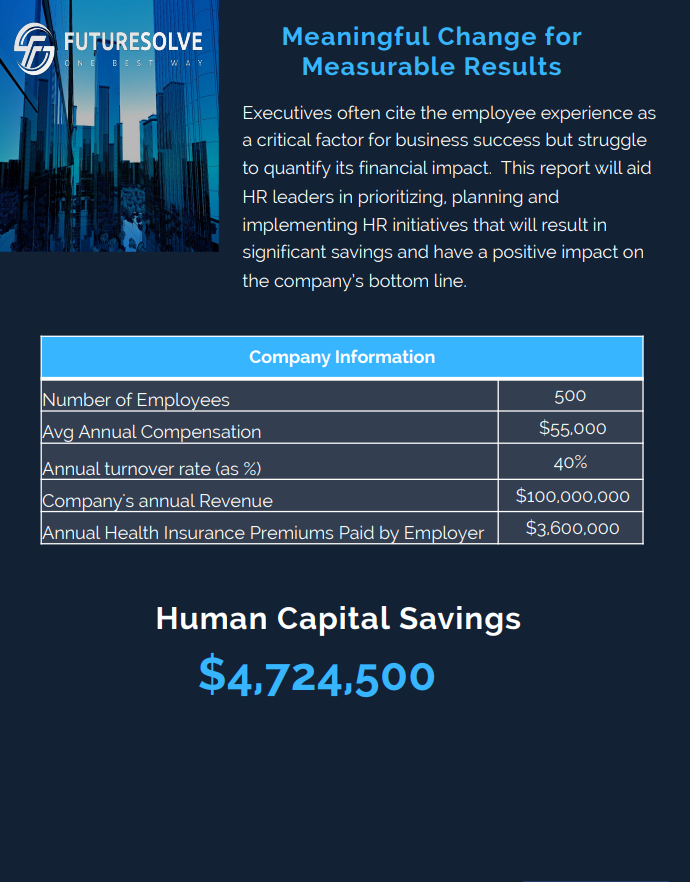The global pandemic indeed brought about many workplace changes. The latest trend that we witnessed was the Great Resignation. It implied employees quitting their jobs in masses. It is estimated that around 4 million employees in the United States alone quit their jobs last year. There have been several factors contributing to the Great Resignation, including:
- People looking forward to pursuing dream jobs or specific schedules allowing more quality time with loved ones
- Employees asking employees to come back to the physical form of work after settling into the ‘work-from-home’ scenario
- Employees experiencing a major burnout due to the pandemic
- Low-wage employees looking forward to receiving better pay
Whatever might be the reason for the Great Resignation, it is a major concern for employers of the world. You should aim at investing capital and time in the employees. This implies retaining them for a longer period. Eventually, hiring new employees is an expensive process. To minimize losing valuable employees to the Great Resignation, you should aim at the creation of a robust performance management software strategy. When you do so, it will help you continuously evaluate, manage, and coach the employees such that they continue working for your company.
What is a Performance Management Process?
The performance management process can be regarded as the communication-based, collaborative, and intensive procedure wherein management and employees work together towards planning, monitoring, and reviewing the long-term goals, objectives, comprehensive contributions, and work trajectory of the employees to the company.
The process of performance management tends to be continual. There are regular sessions wherein both the employees as well as the management have the chance to receive and give feedback. When the performance management process is executed effectively, it can help in solving problems in the workplace while setting employees up for ample success in achieving both individual and company goals.
Performance management system is available as a software solution for most businesses. It allows businesses to track as well as measure the overall performance of employees consistently. It helps in aligning strategically between employees, departments, and corporate goals to make sure that the organization functions effectively and efficiently towards achieving the end goals.
A comprehensive detail about the proficiency level of an employee -including multiple data points, can be utilized during the layoff or while making a crucial decision to retain productive talent. An employee performance management software solution of a company features a list of the strengths and weaknesses of every employee.
Steps to Create an Effective Performance Management Process
As you wish to develop the performance management process of your organization, it will take ample reflection, time, and action on a major part of the team. Here are some critical steps that you need to ensure while designing a performance management process:
#Plan
Planning turns out to be the primary stage of performance management processes. The planning stage should include:
- The Defining Stage: The process of performance management starts with proper planning. Both management and HR need to define the job properly -including both short-term & long-term goals, a comprehensive description, while identifying key objectives and developing a clear metric for how the goals will be achieved.
- The Feedback Stage: Once the defining stage is completed by management, employees should be given the chance to offer input on the available information. Employees will have core insights into what competencies, skills, and goals will best help the company to achieve successive goals.
- The Approval Stage: Both employees and management agree to defining the goals, objectives, and diverse roles. As this step of the performance management process becomes collaborative, management should set the stage for the entire process to be collaborative.
#Coach
- Organizing Meetings Regularly: Once the future goals and parameters have been set, the next step involves coaching on a regular basis. Meetings should be arranged at least quarterly. Still, monthly meetings are the best.
- Offering Necessary Coaching and Training Solutions: Regular meetings should focus on dedicated solutions as well as coaching opportunities.
- Soliciting Feedback on Both Sides: Management of the organization should be capable of both receiving as well as giving honest feedback while working with employees instead of adopting a combative step.
- Revisiting Objectives: As the process of performance management will continue, management should aim at revisiting objectives to observe whether or not adjustments should be made.
#Review
As the annual performance management cycle reaches its end, there should be comprehensive employee review carried out. It is also known as performance appraisal. Usually, it is organized once a year to analyze how well employees have performed during the given span of time.
While reviewing the performance management process, it is imperative for both employees and management to analyze the previous year and observe how well the performance management process has worked. Some questions to raise are:
- How can you make the process better?
- What training will help employees to perform better?
- What challenges did the employees go through?
- Were organizational and personal objectives fulfilled? If not, why?
Giving actionable feedback based on the review is another integral part. Management should offer actionable feedback to the employees such that they know specific areas in which they can improve for future performance.
#Action
- Reward & recognition: It does not imply monetary rewards necessarily. However, it can include monetary compensation for motivation as well. Some of the other rewards could be assignment of a new project, time-off, company-centric recognition, or leadership opportunities.
- Focusing on the Performance Management Cycle for the Next Year: The last stage of the performance management cycle will offer employees and management an opportunity to offer relevant feedback on the entire process while asking for feedback and thoughts for the planning stage of the cycle of the upcoming year.
Why Should You Use Performance Management Software
There are several benefits of a dedicated business performance management software system in the modern business climate. Therefore, organizations are expected to adapt instantly to grow and remain competitive. A well-executed HR performance management software system can help an organization in achieving its goals.





























